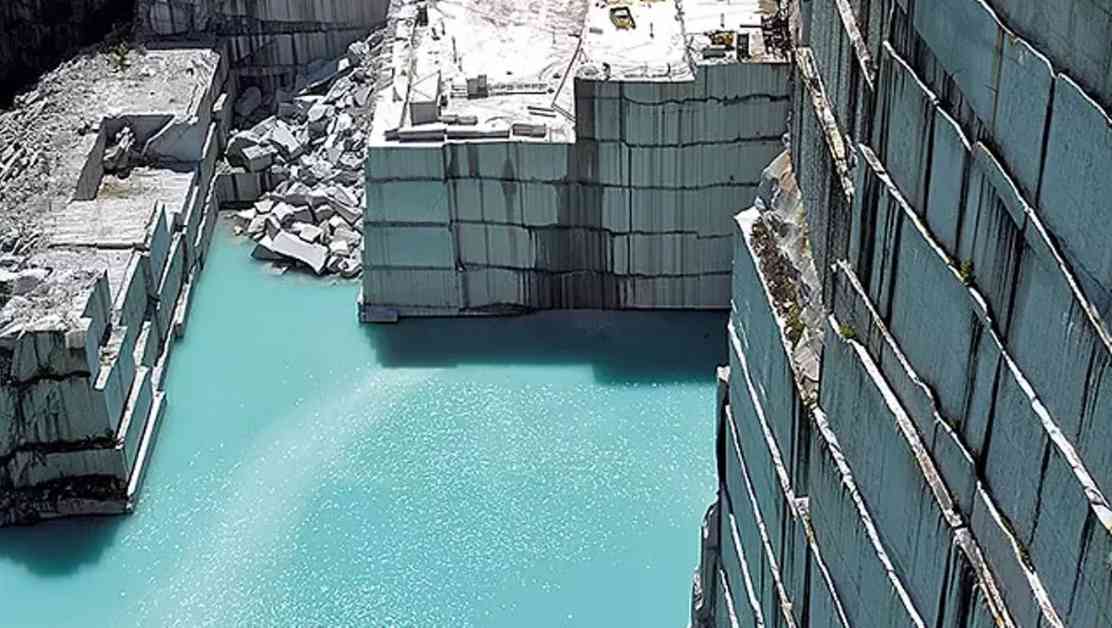Rock of Ages, a cornerstone of Vermont’s granite industry and a beloved tourist destination, has recently announced the closure of its doors to the public. For over a century, Rock of Ages has welcomed visitors to explore its magnificent granite quarry and stone-sculpting operation. The decision to end public access to the quarry was a difficult one, citing concerns for visitor safety, evolving regulations, and operational needs.
Located in Barre, the Rock of Ages quarry is home to the impressive E.L. Smith Quarry, the largest operating deep-hole dimension granite quarry globally. Visitors have marveled at the grandeur of the 600-foot-deep quarry, where white stone walls surround a stunning teal blue pool. The quarry’s deep-hole dimension refers to the extraction of large stone slabs, showcasing the intricate process of granite excavation.
In addition to the iconic quarry, Rock of Ages features a 160,000-square-foot factory where a significant portion of the country’s granite monuments and headstone memorials are crafted annually. From May through October, visitors were treated to a behind-the-scenes look at granite sculptors at work, educational displays, films, and souvenirs at the visitors’ center. The outdoor granite bowling alley, a unique attraction, allowed visitors to experience the innovative spirit of the quarry.
While the closure of Rock of Ages’ visitors’ center marks the end of an era for Vermont tourism, it presents an opportunity for the Vermont Granite Museum in Barre. Following the announcement of Rock of Ages’ closure, the Barre museum saw a substantial increase in tour bus reservations, highlighting the potential for the museum to become a new focal point for visitors interested in the region’s granite industry.
Barre, known for its high-quality gray granite, has a rich history rooted in stonecutting. The city’s granite industry, which peaked in 1929 with 18,000 employees, fueled the construction of numerous landmarks, including grand homes, churches, and public buildings. The downtown area is adorned with granite statues and artwork, showcasing the enduring legacy of Barre’s granite heritage.
As Rock of Ages transitions away from public tours, the Vermont Granite Museum and Hope Cemetery emerge as alternative destinations for tourists seeking insight into the region’s stonecutting tradition. Hope Cemetery, a unique outdoor museum, features a collection of elaborate granite headstones, including sculptures of race cars, soccer balls, and celestial figures.
With enough granite to last another 4,500 years, Rock of Ages remains a pillar of the industry. The company’s rich history, dating back to 1885, reflects a legacy of strength and quality in granite manufacturing. Despite the closure of its doors to the public, Rock of Ages’ commitment to adapting to regulation changes and operational needs underscores its dedication to safety and integrity.
As historian Scott McLaughlin laments the loss of Rock of Ages’ public tours, he emphasizes the significance of preserving Vermont’s stone industry heritage. With the closure of other historical sites, such as the Vermont Marble Museum, McLaughlin stresses the importance of educating the public about the ongoing operations in the granite industry. While the public may no longer have direct access to the quarries, opportunities to learn about the industry remain available through institutions like the Vermont Historical Society and Barre’s Millstone Grand Lookout.
While the end of Rock of Ages’ public tours marks a significant shift in Vermont’s tourism landscape, it opens the door to new experiences and educational opportunities for visitors to explore the region’s rich granite history. As Barre continues to honor its legacy as the Granite Center of the World, the spirit of innovation and craftsmanship that defined Rock of Ages lives on in its enduring impact on the granite industry.









